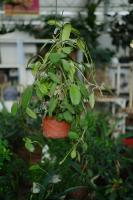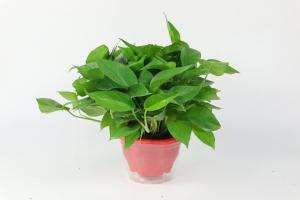Is Tuna Plant Good for Back Pain?
Back pain is a common ailment that affects millions of people worldwide. It can be caused by a number of factors, including poor posture, stress, and physical injuries. While there are many treatments for back pain, some people turn to natural remedies to relieve their discomfort. One of these remedies is the tuna plant, which has been used for centuries to treat a variety of ailments.
What is Tuna Plant?
The tuna plant, also known as prickly pear cactus, is a type of cactus that grows in desert regions around the world. It is most commonly found in the southwestern United States, Mexico, and South America. The plant produces a fruit that is commonly eaten in these regions and is known for its high nutritional value. The tuna plant has also been used for medicinal purposes for centuries, particularly in traditional Mexican medicine.
What Makes Tuna Plant Good for Back Pain?
There are several compounds found in the tuna plant that are believed to make it effective in relieving back pain. One of these compounds is betalains, which are known for their antioxidant and anti-inflammatory properties. According to some studies, betalains may help reduce inflammation in the body, which can help ease back pain caused by inflammation. The tuna plant also contains compounds that may help improve blood flow and reduce muscle spasms, both of which can contribute to back pain relief.
How to Use Tuna Plant for Back Pain?
There are several ways to use the tuna plant to relieve back pain. One of the easiest ways is to drink tuna plant juice. To make the juice, cut off a section of the plant and remove the spines. Use a blender to blend the remaining flesh, then strain the mixture to remove any seeds or pulp. Drink the juice daily to help reduce inflammation and relieve pain. Another way to use the tuna plant is to apply it topically. To do this, boil a section of the plant in water until the water turns a reddish color. Once the water has cooled, use a cloth to apply it to the affected area. This may help reduce inflammation and relieve pain.
Precautions and Side Effects
While the tuna plant is generally considered safe, there are some precautions to keep in mind. First, it is important to ensure that the plant is properly identified, as other cactus plants can look similar. Second, the plant has spines that can cause injury, so it is important to handle it with care. Third, people with diabetes should be cautious about consuming too much tuna plant, as it may lower blood sugar levels. Finally, some people may experience side effects such as nausea, vomiting, and diarrhea when consuming tuna plant juice or applying it topically.
Conclusion
The tuna plant has been used for centuries to treat a variety of ailments, including back pain. While there is limited scientific evidence to support its effectiveness, many people find that it helps relieve their discomfort. If you are considering using the tuna plant for back pain relief, it is important to do so under the guidance of a healthcare provider and to take proper precautions to ensure your safety.

 how many times do yo...
how many times do yo... how many planted tre...
how many planted tre... how many pine trees ...
how many pine trees ... how many pecan trees...
how many pecan trees... how many plants comp...
how many plants comp... how many plants can ...
how many plants can ... how many plants and ...
how many plants and ... how many pepper plan...
how many pepper plan...































